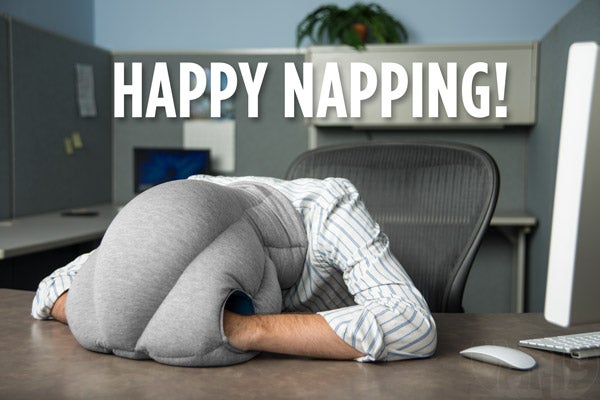We’ve all been there: The time is around 2pm and you’re in your office feeling sleepy and unproductive.
First of all, you should know that this is normal; it’s your body cycle at work, and every 24 hours, you have two periods of intense sleepiness. Instead of going for a third –or fifth–cup of coffee, why not take a nap instead? Studies have shown that a few minutes of snooze during the day can do wonders for your health and creativity. A recent research conducted at the Beijing University of Technology found that naps can improve brain function and visual systems, and promote physical and mental recovery.
The fact is, there is nothing wrong with a mid-afternoon nap. It shouldn’t be looked down upon, rather, this should be encouraged in the workplace.
Now that I’ve convinced you to take more naps during the week, here are a few tips on how to power nap at work and have the best results:
Skip Coffee, Nap Instead
We love caffeine; it keeps us going. But an energy slump is a sign that your body needs to regenerate, so napping is the solution. In a study published in 2008, the University of California’s Sara Mednick compared the benefits of 200 mg of caffeine with a 60 to 90 minute daytime nap on various memory tasks. The study concluded that a nap generally improved memory performance, while caffeine either didn’t affect – or worsened – performance.
Understand the Perfect Nap for You
This is true: naps vary. Depending on your needs, certain naps give you better results. A short nap of even 20 minutes will enhance alertness and concentration, mood and coordination. A nap of 90 minutes will get you into slow wave and REM sleep, which enhances creativity.

If you sleep deeply and uninterrupted the whole time, you’ll go through a full 90-minute sleep cycle, and recoup sleep you might not have gotten the night before. But sometimes, just 10 minutes is all you need: A study in Australia found that a 10-minute afternoon nap was enough to help participants recuperate from a night of restricted sleep.
Napping is About Timing
The most natural time to take a nap, based on our circadian rhythms, is in the afternoon sometime between 2 and 4pm. (Not a good time to book a meeting). But everything has to do with the time you wake up. There is a napping wheel that pinpoints the ideal time to snooze, when a nap would contain a good balanced of slow wave and REM sleep. According to this, the balance typically occurs six to eight hours after waking.
If you need to keep your nap time in check, there are a few apps and devices that can help you. For example the SiestaApp, monitors your nap time and wakes you up at the right time. And then we have the Napwell mask, fully funded on Kickstarter, which helps you nap efficiently by reducing “sleep inertia.”

Find the Ideal Napping Spot
Find a nice spot to get your snooze on. Ideally, your office should provide a “Nap Zone” for workers, but maybe it’s too much to ask for. Instead find somewhere dark, quiet and where you can lie down. It takes about 50% longer to fall asleep sitting up (That’s why flights suck). If you need something to help you sleep, Pandora and Spotify have some nice relaxing stations to help you doze off to slumber land.

